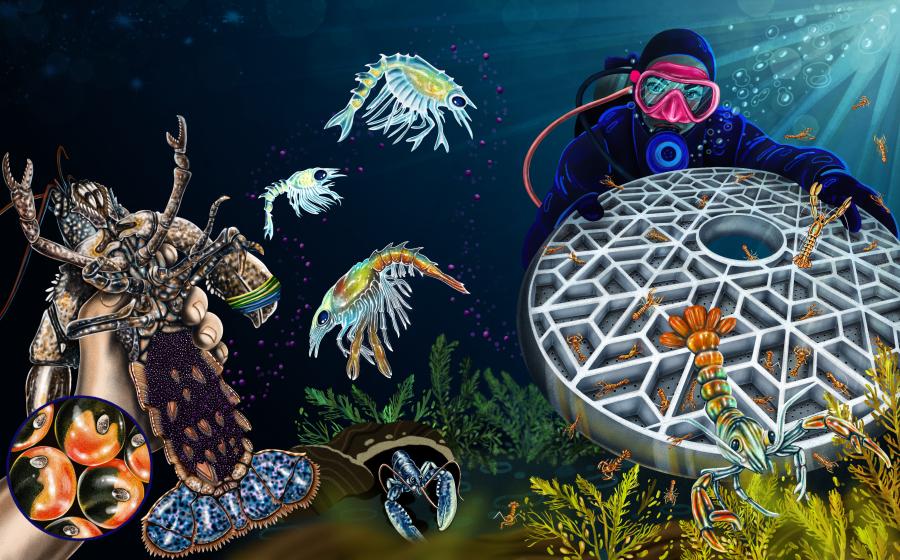Diving in Saudi Arabia: Discover the Red Sea’s Newest Dive Haven
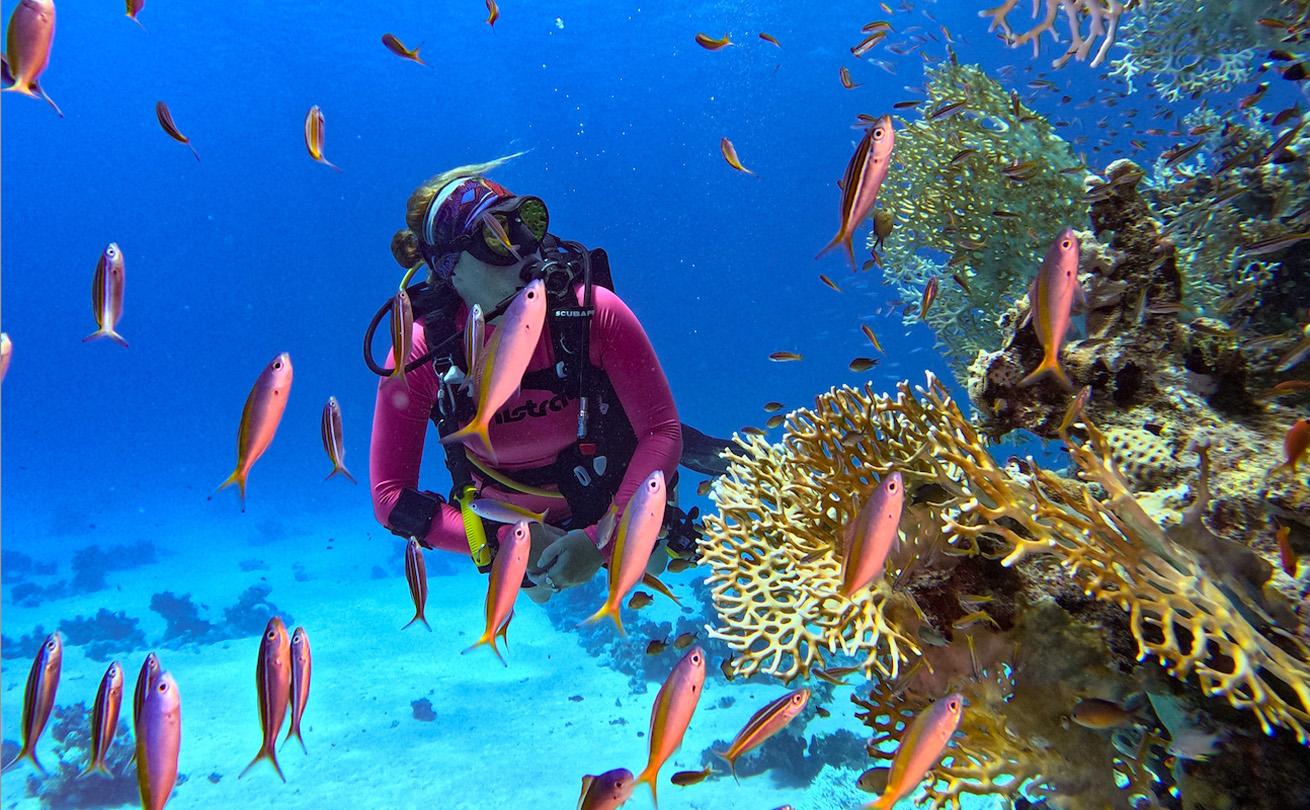
Courtesy Red Sea GlobalA diver explores the vibrant reefs of the Red Sea.
The Red Sea has attracted many scuba enthusiasts, may they be diving out of Aqaba in Jordan, Eilat in Israel or the dive centers of Egypt’s Sharm El-Sheikh, Hurghada or Dahab, home of the famed Blue Hole. In Saudi Arabia, where the Red Sea meets over 1,200 miles of its western shoreline, scuba diving isn't new to locals. However, international travelers like myself are only now discovering the recreational diving scene in this Middle Eastern kingdom, because historically, it hasn’t always had its doors open to tourism.
All of that changed in September 2019 when Saudi Arabia’s National Tourism Strategy commenced—effectively opening the borders to the world—as part of a larger “Vision 2030” initiative from progressive-thinking Prime Minister and Crown Prince Mohammed bin Salman. His goal is to work with the private sector to modernize the kingdom, dissolve any stigmas held on by the Western World and diversify the economy so that it’s not as oil-dependent. Tourism has always been a sector that has grown economies in other countries, and Saudi Arabia has followed suit and gone all in, especially now that pandemic travel restrictions are a thing of the past.
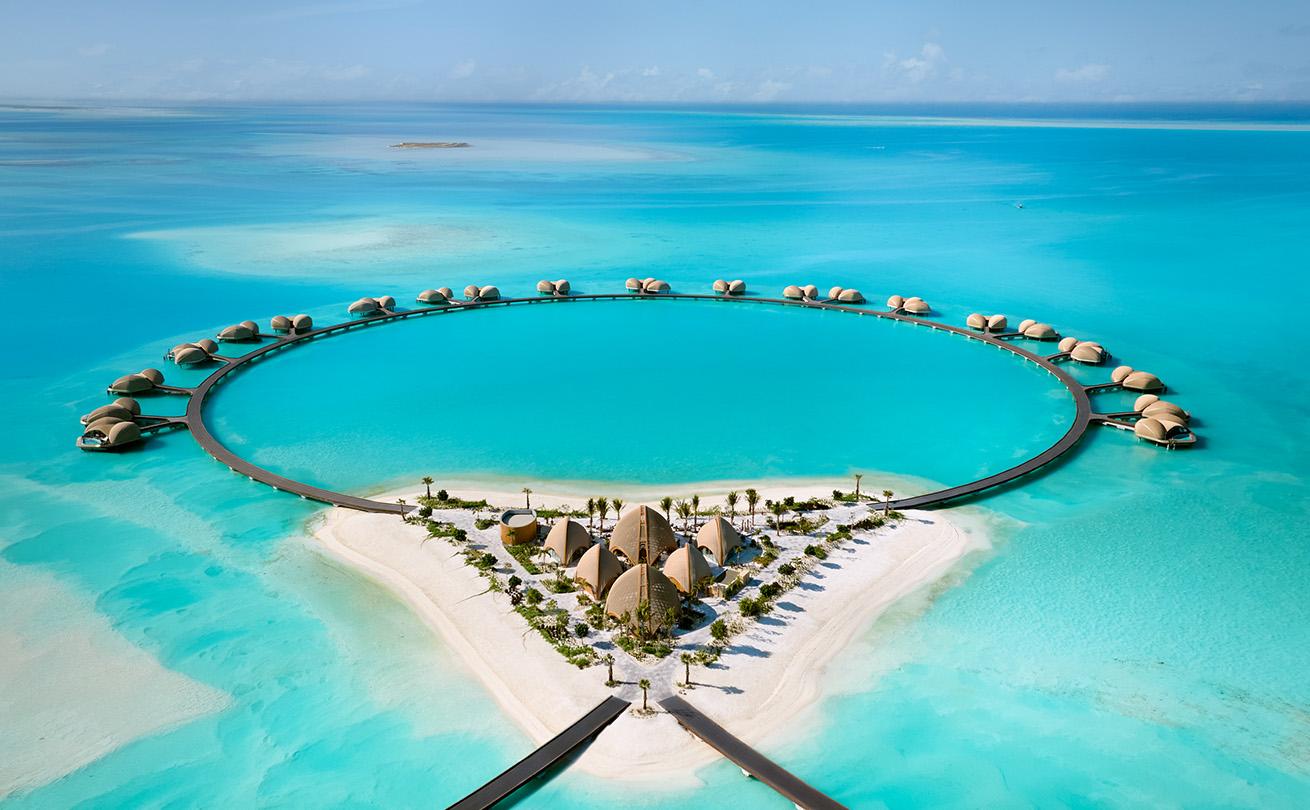
Courtesy Red Sea GlobalNujuma, a Ritz Carlton Reserve
That said, commercial recreational scuba diving is increasingly more popular as new tourists discover the country, in places like the cosmopolitan seaside city of Jeddah. However, arguably the most exciting Saudi scuba scene is off the coast of Hanak, at the Al Wajh Lagoon within the Ummahat Archipelago, where the recent and continual work-in-progress Red Sea Global (RSG) Project opened its first phase in 2023 with the St. Regis Red Sea Resort. A Ritz Carlton Reserve opened in May 2024 as another one of the limited number of dive-equipped resorts that RSG is developing, all in an environmentally responsible and regenerative way that aims to uplift local communities and economies—and even expand the existing natural environment.
Related Reading: Delve Into Tec Diving on a Red Sea Vacation

Courtesy Red Sea GlobalGalaxea is named after a bold and vibrant coral prevalent in the Red Sea and will offer diving experiences that let guests explore life below the water.
Under the Red Sea
I went diving with the Galaxea dive shop operating out of the St. Regis, where my dive leader Maggie Sutanto, dive buddy James Barrett and I explored part of the 14-mile outer reef known as Al Jadir (“The Wall” in Arabic), naturally forming ten coral-rich channels. Here, there are roughly thirty dive sites in and around the Al Wajh Lagoon, all vetted for recreational diving since RSG began surveying the area in 2021—with so much more yet to be explored. For me and other early adopters, having the opportunity to dive a relatively undiscovered underwater region was already thrilling as a prospect, even before my back-roll entry.
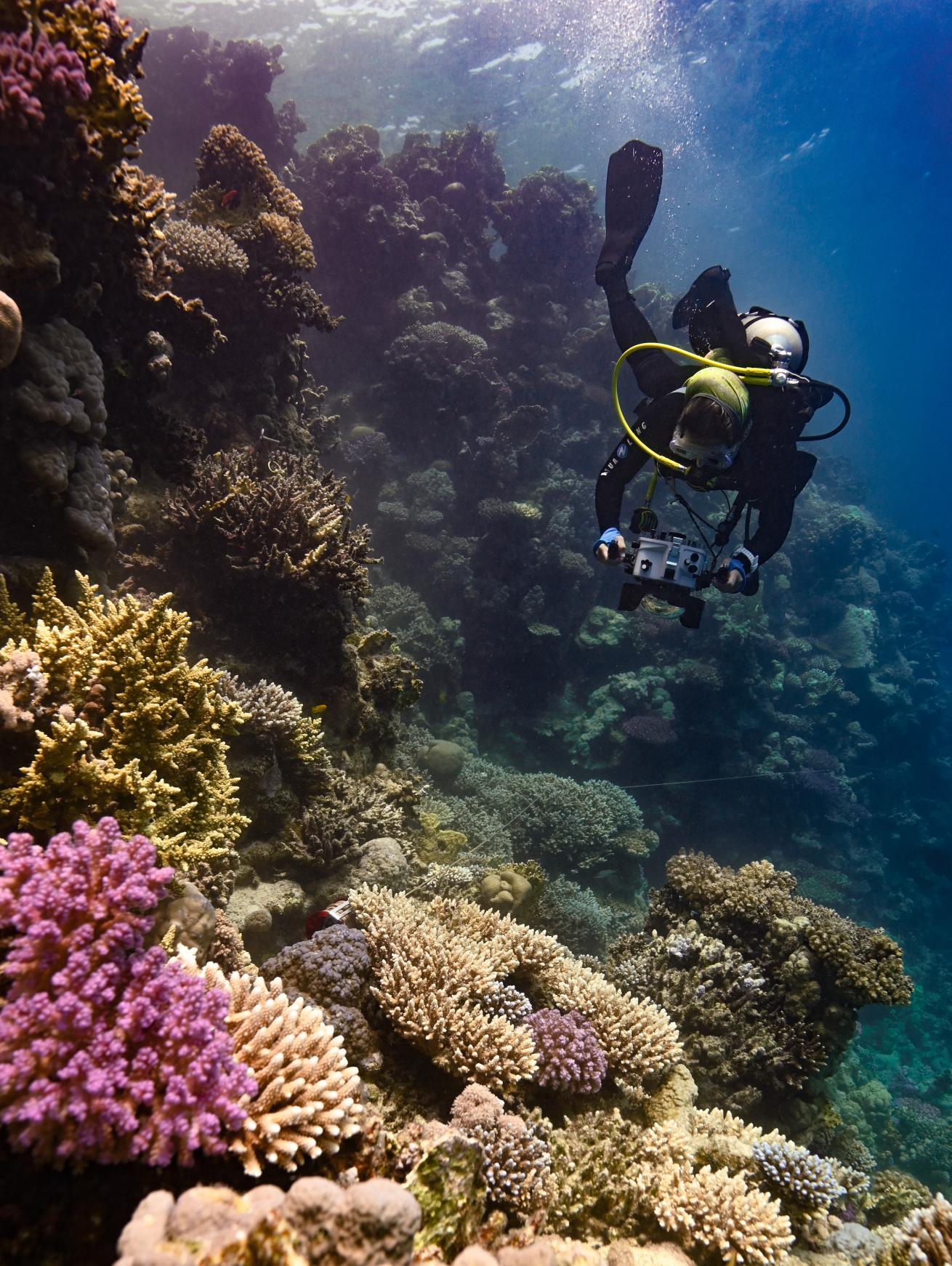
Courtesy Red Sea GlobalRed Sea Global diver Dr. Rhonda Suka conducting a reef survey.
At the Umm Blud dive site—affectionately nicknamed “MJM” after the initials of the divemasters who helped survey it (including one M for Maggie)—I marveled at the excellent visibility showing off the colorful and healthy coral that supported the stingrays, moray eels and indigenous Arabian angelfish that caught my eyes. If I had been lucky, I might have seen one of the sharks that lurk in the area.
“I have personally seen eight species of shark, including hammerhead—only once—and tiger sharks,” reports Dr. Sander den Haring, RSG’s Associate Director of Dive Operations, who’s been instrumental in the development of scuba diving in the area. He and his team will continue to survey the virtually unexplored area, in search for potential new dive sites, including ones with 18th-century wrecks, provided they accommodate healthy coral reefs and wildlife.
Related Reading: An Intro to Rays—and How to Photograph Them
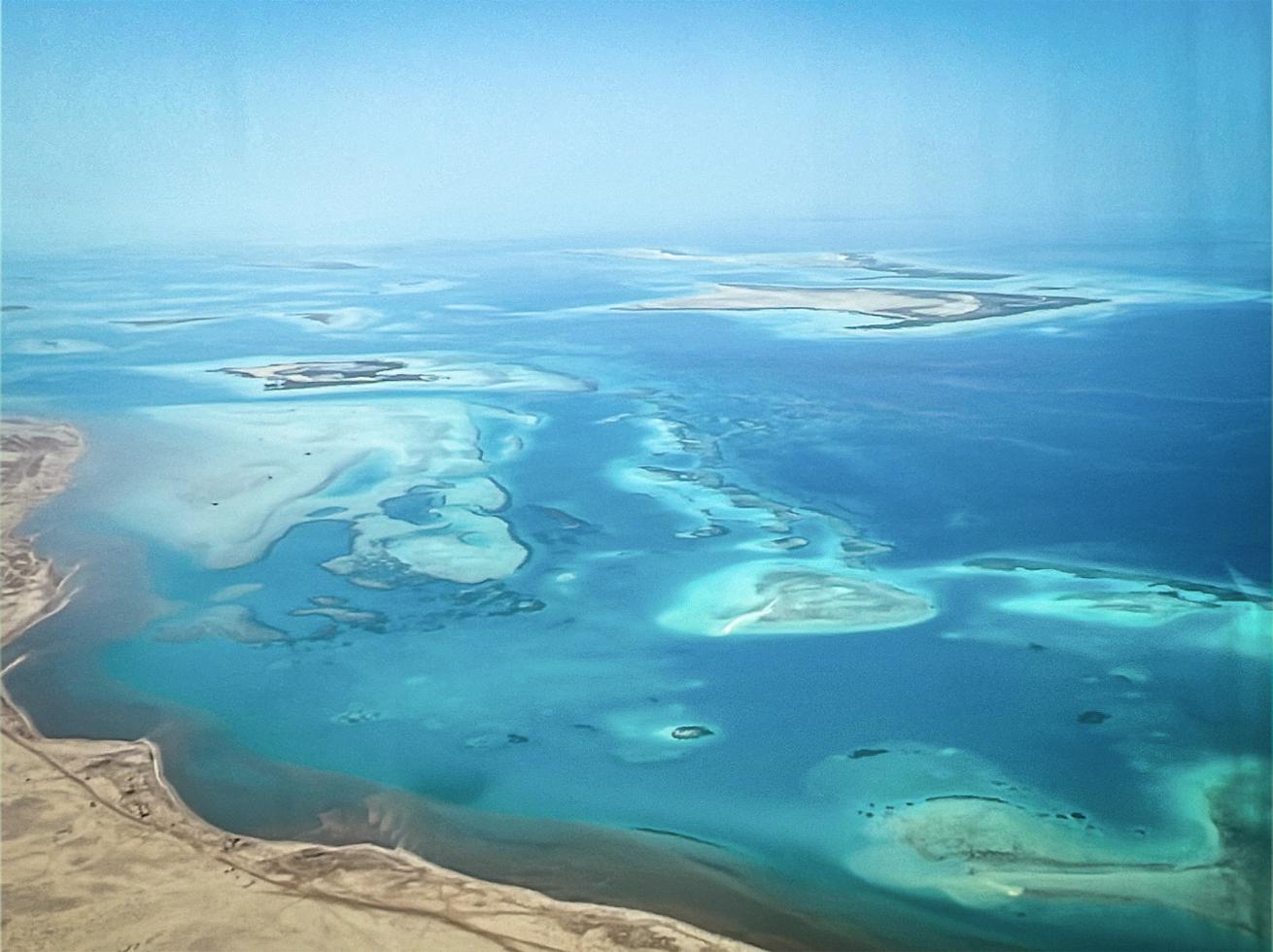
Erik TrinidadAn aerial view of the Ummahat Archipelago
Managing the Unexplored
Mindful of keeping the burgeoning scuba diving scene as stellar as it can be, the dive shops within the RSG Project strive to circulate through the existing sites to reduce any impact to any particular one. Regular—albeit informal—marine exams are given to all the dive guides to keep everyone up to date with the latest in underwater discoveries, which is inherently a frequent occurrence.
"If you are an explorer, you would like to come here. This area is unexplored—it's new!” encourages Sutanto to the diving community. “So be part of the exploration—part of the discovery.”
“Apart from having a healthy reef system with colorful corals and an abundance of marine life, much of the excitement stems from the opportunity to dive in relatively unexplored areas,” adds den Haring. “International diving has not seen these locations and this truly is ‘exploring the unknown.’”










